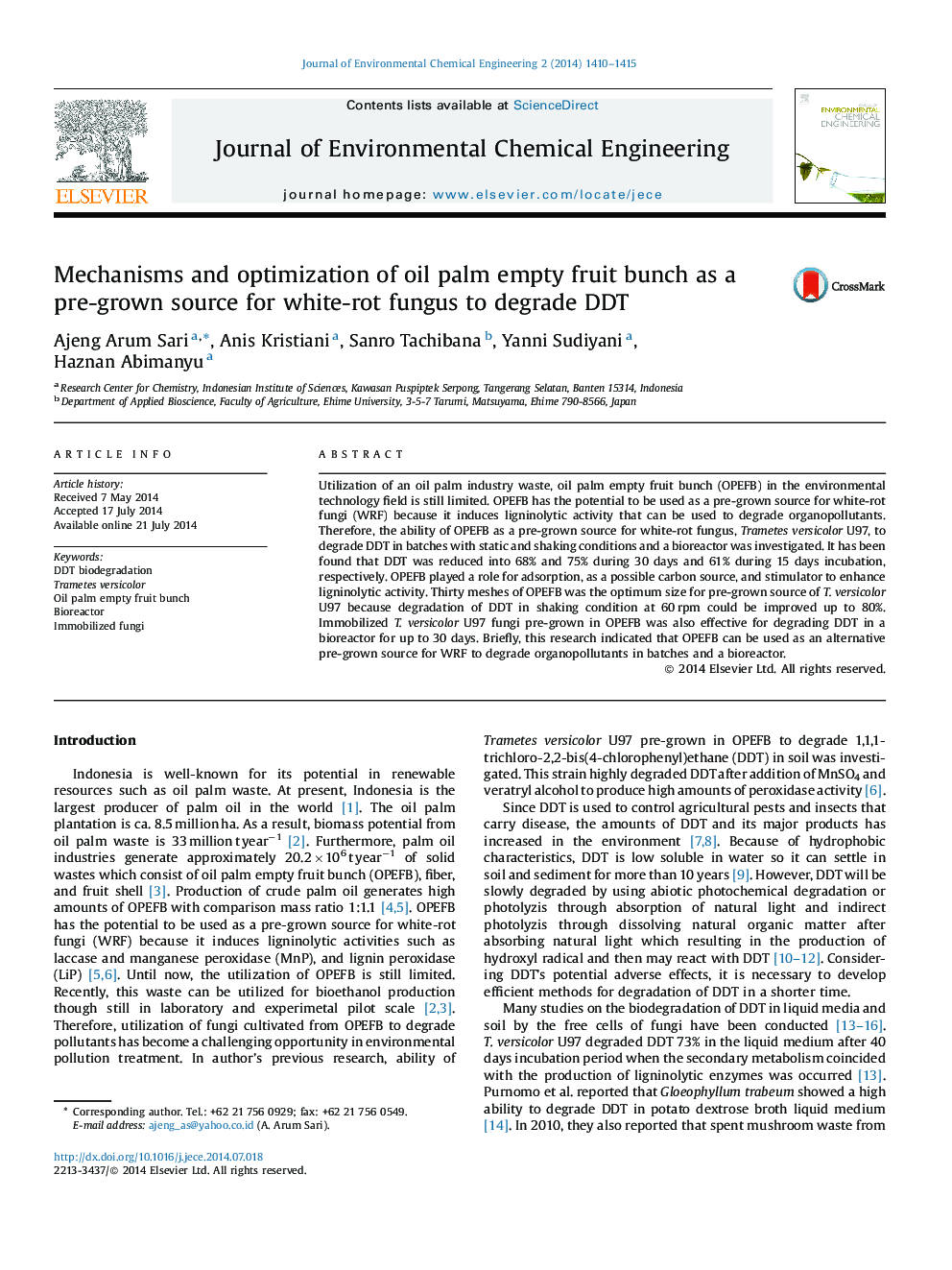| کد مقاله | کد نشریه | سال انتشار | مقاله انگلیسی | نسخه تمام متن |
|---|---|---|---|---|
| 221975 | 464268 | 2014 | 6 صفحه PDF | دانلود رایگان |

• T. versicolor U97 in OPEFB degraded DDT using mechanisms of adsorption, carbon source utilization and ligninolytic system stimulation.
• SEM of OPEFB after growing fungus showed the breakdown of rigid lignin structure and disrupting the crystalline cellulose structure.
• The highest degradation of DDT was obtained using pre-grown source OPEFB 30 mesh under 60 rpm agitation.
• The high degradation was also obtained by immobilized Trametesversicolor U97 fungi.
Utilization of an oil palm industry waste, oil palm empty fruit bunch (OPEFB) in the environmental technology field is still limited. OPEFB has the potential to be used as a pre-grown source for white-rot fungi (WRF) because it induces ligninolytic activity that can be used to degrade organopollutants. Therefore, the ability of OPEFB as a pre-grown source for white-rot fungus, Trametes versicolor U97, to degrade DDT in batches with static and shaking conditions and a bioreactor was investigated. It has been found that DDT was reduced into 68% and 75% during 30 days and 61% during 15 days incubation, respectively. OPEFB played a role for adsorption, as a possible carbon source, and stimulator to enhance ligninolytic activity. Thirty meshes of OPEFB was the optimum size for pre-grown source of T. versicolor U97 because degradation of DDT in shaking condition at 60 rpm could be improved up to 80%. Immobilized T. versicolor U97 fungi pre-grown in OPEFB was also effective for degrading DDT in a bioreactor for up to 30 days. Briefly, this research indicated that OPEFB can be used as an alternative pre-grown source for WRF to degrade organopollutants in batches and a bioreactor.
Journal: Journal of Environmental Chemical Engineering - Volume 2, Issue 3, September 2014, Pages 1410–1415